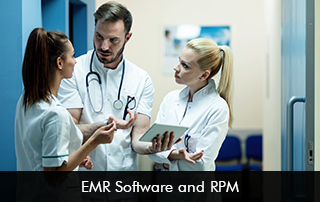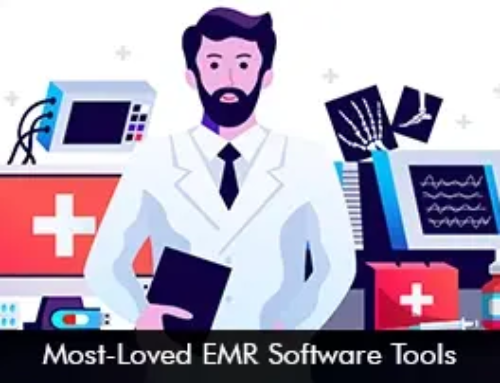In today’s digital healthcare scenario, Electronic Medical Records (EMR) Software does more than just store patient data. As Remote Patient Monitoring (RPM) gains ground, healthcare providers are seeing a change toward more effective and ongoing patient care. Bringing RPM tools into EMR Software has an impact on how doctors gather, study, and use patient data, which leads to better results, streamlined workflows, and ultimately improved care delivery.
How RPM is integrated into EMR Software Systems
Remote Patient Monitoring lets doctors keep an eye on their patients’ health in real-time even when the patients aren’t at the clinic. Devices like blood pressure monitors, glucose trackers, and wearable fitness gadgets keep track of health stats all the time. When these RPM devices work with EHR Software, all the health information they collect gets added to patients’ health records. Making them updated and accurate, empowering clinicians at the point of care.
This integration means that patient information can be seen in one place by healthcare providers as opposed to having to look for data on different platforms. This saves the time to compile information that may have been entered several times. Electronic Medical Records Software includes analytics dashboard features that enable clinicians to identify RPM data trends, define triggers for abnormal readings, and make informed clinical decisions without face-to-face consultations.
The Popularity of RPM and EHR Software
The integration of RPM into Electronic Health Records (EHR) Software has become more popular in the last couple of years. New studies suggest that the RPM market will experience massive growth reaching $207.5 billion by 2028, with more healthcare organizations and facilities integrating Remote Patient Monitoring technologies into their services. There will be a greater focus on chronic disease management and preventable hospital readmissions. This trend has only become even more amplified over the recent years in particular during the Covid-19 pandemic as the practice of telehealth and RPM equipment has proved crucial to patient care delivery.
EMR Systems with RPM functionalities facilitate healthcare organizations to enhance communication with patients, deliver individualized care, and manage total healthcare expenses. As more patients and providers grasp the necessity of actual-time health data, the market for RPM-supported EHR software is projected to go even higher in the coming fiscal year.
Moving Ahead
Remote patient monitoring is a cost-effective method to monitor chronic disease conditions without the patient having to visit the practitioner’s office. The smooth integration of RPM into EMR Software has revolutionized patient care, by reducing gaps in care and giving real-time insights. Software vendors must prioritize data security and encrypt technology solutions to protect patient data from any lurking cybersecurity threats.








